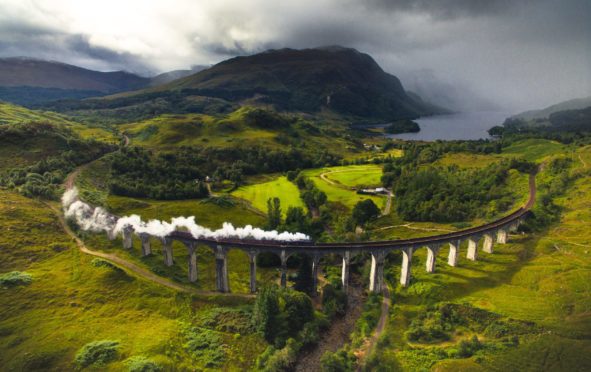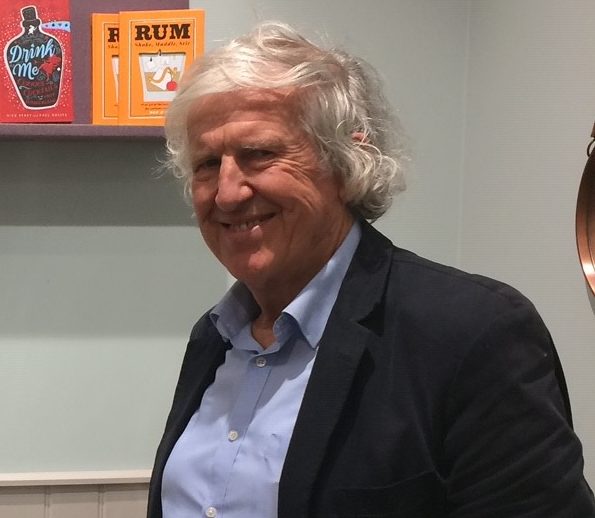
From Edinburgh Waverley, named after Sir Walter Scott’s novels, to moorland Corrour, made famous in Trainspotting, Scotland’s railway stations are among the most fascinating in the world.
Author Bill Williams tells Sally McDonald the Honest Truth about why they are so special.
How did you first become fascinated by Scotland’s stations?
As a journalist in Glasgow years ago, I was sent up to Plockton to report on the battle to save the Kyle line from closure.
Closing this wonderfully scenic line struck me as crazy. Then I learned the same fate threatened the breathtaking line from Fort William to Mallaig. So I decided to join the fight to save the lines.
I had just started a publishing business and I persuaded the late, great Tom Weir – of TV’s Weir’s Way – to write fighting guides to both lines.
What was the inspiration for Scotland’s Stations?
The interest generated by Tom’s two books, The Kyle Line and The Mallaig Line, inspired me to do more. I realised a host of mainly rural stations were being quietly abandoned and often demolished, so I set about recording some of them.
The first edition of Scotland’s Stations was quite rough and ready, printed in rather fuzzy black and white, and when it sold out I thought I’d better do the job properly and that ended up taking many years.
How far did your research take you?
It meant not just visiting every station once, but most of them many, many times, ideally catching the very rare occasions when they were visited by steam train “specials”.
Any surprising or shocking discoveries along the way?
Rather than simply compile a list of every station in Scotland, I concentrated on the smaller, out of the way stations, particularly on Highland lines that – miraculously – had escaped closure.
Some are so remote you wonder why they were built in the first place and marvel at their continued presence.
Stations like Kildonan, north of Helmsdale, once the scene of activity during the celebrated gold rush, but now totally deserted and seemingly miles from any human activity.
What makes Scotland’s stations so notable?
Principal stations in Scotland’s cities are examples of Victorian confidence at its most illustrious. Edinburgh’s Waverley would merit a whole book to itself.
Never doing things by halves, they had to have grand hotels to go with them. Edinburgh’s North British and Glasgow’s Central, were built on the grandest scale.
Which are most fascinating?
Across the Highlands there is a host of really wacky stations that are almost too good to be true. Corrour in the middle of Rannoch Moor, with no road access, won fame in the film Trainspotting with Ewan McGregor. Today you can book accommodation in the old signal box. In the far north is Altnabreac, miles from anywhere, in the middle of the wild Flow country. Don’t alight here unless you really know what you’re doing.
Probably the most photogenic is the once-private station for the Duke of Sutherland now serving visitors to Dunrobin Castle. It’s more like an ornate summer house than a railway station.
Which station is your personal favourite?
That’s a tricky one. Glenfinnan on the Harry Potter line probably deserves top marks for imagination. In a normal year, you can eat in the restored dining car and – if you plan ahead – book a berth in the restored sleeping car. There’s also a museum.
What’s the future for Scotland’s stations?
Recent years have seen initiatives like ScotRail’s Adopt A Station and Community Rail Partnerships, but there’s little evidence this era will make any imaginative contribution to railway architecture. The New Borders Railway is graced with the most modest possible stations.
But at least the demolitions have stopped and many of our old stations are being loved once more. I’d encourage anyone to visit them while on staycation!
Scotland’s Stations by Bill Williams, Northern Books from Famedram

Enjoy the convenience of having The Sunday Post delivered as a digital ePaper straight to your smartphone, tablet or computer.
Subscribe for only £5.49 a month and enjoy all the benefits of the printed paper as a digital replica.
Subscribe